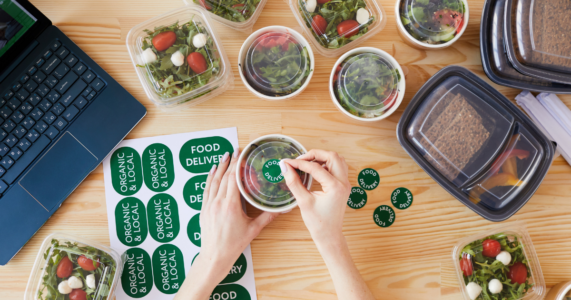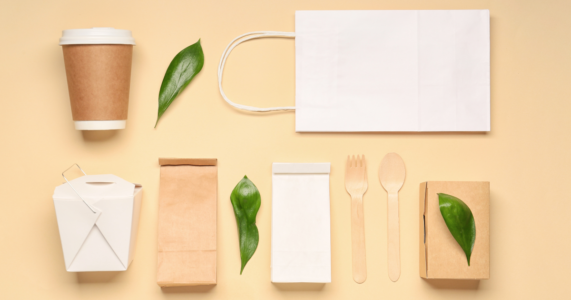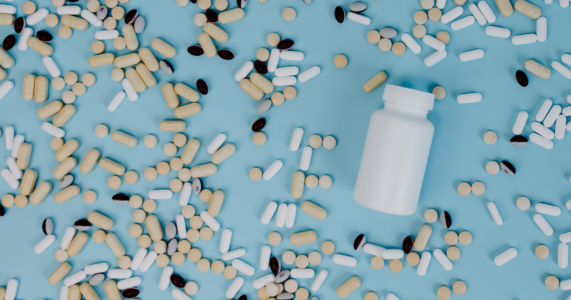How to Protect Temperature-Sensitive Goods During Transit
Whether you are a food, beverage, or pharmaceutical company that is relied upon by their customers to preserve goods during transit, it is essential that you pack items securely and in a temperature-controlled manner. Parcels can come into contact with several damaging factors during transit, such as humidity, extreme temperatures, and spoilage. If the correct packaging practices aren’t implemented, goods can be ruined before they arrive at their destination. The main two practices involve efficient refrigeration and insulation. This will help keep temperatures cool inside the parcel and keep any humidity on the outside. To ensure that your temperature-sensitive products are appropriately stored during shipping, Davpack has put together a list of tips that will guarantee that your items will arrive in pristine condition.

Packaging
Before considering any other factors to ensure your temperature-sensitive goods are safe, you should always think about the type of packaging you are using first. The form of packaging you use can help prevent damage or the perishing of items.
- Boxes – Multiple materials are known to be useful for transporting temperature-sensitive items, such as corrugated cardboard boxes, plastic parcels, or the more environmentally friendly alternative to plastic – PLA packaging – which is known to be suitable for storing pharmaceutical items, food and drinks at one temperature during transit. There are plenty of other options available, such as parcel boxes that can keep the contents cool by refrigerating the products, or on the other hand, keep them hot by using insulating properties.
- Airtight – Another important wrapping technique is to ensure that parcels are airtight. It is especially vital to wrap baked goods such as pies, cakes and pastries with an airtight seal. Covering items with plastic or other forms of airtight containers will maintain the food’s freshness whilst out for delivery without the risk of them going off or becoming dry.
- Padding – You can buy boxes that come with padding inside of them however, if your chosen container doesn’t, inserting cushioning is essential for lessening the movement of products. This will reduce impairment and lower the chances of air getting to the contents and causing spoilage. You can either do this with crumpled paper, bubble wrap, or TempGuard Thermal Liners. The liners keep the contents at the temperature you require by providing insulation whilst also having cushioning properties. Keep your goods safe from perishing and out of harm’s way. Not to mention they are also an environmentally sound packaging product!
Cold Storage
Guaranteeing the longevity of food, beverage, or pharmaceutical goods during transit is risky, all items must keep their ideal temperature at all times. A couple of degrees is all it takes to ruin cold-temperature foods, so insulation and refrigeration are essential.
- Insulation – Using insulated containers is important for meats, fish, and dairy. This is because fresh foods need packages that have insulating properties to make sure they stay fresh at all points of their journey. You can use polystyrene boxes, a heavy grade LDPE and foil combination, an eco-friendly foam system or a cushioning system as mentioned previously with the TempGuard Liners. There are countless options available for food insulation, so it is down to you to test them out and find which ones are best suited to your produce.
- Watertight – Another form of packaging you should consider adding inside your parcels is watertight plastic. This is key for chilled foods rather than heated ones. You should always line the box with watertight plastic if the items you are sending contain water or could potentially melt during transit. This will prevent the container from getting wet and opening whilst on its journey – reducing the chance of product loss or damage.
- Ice Gel and Packs – A final addition to parcels if you know that your food, drinks or medicines need to be kept cold is to insert ice packs, or gel ice packs, to maintain a cool temperature during shipping. This will keep the container cold and ensure that all items arrive fresh and intact at their destination.

Keeping items fresh and unimpaired during transit is the main concern of all food, drink, and pharmaceutical companies. There are plenty of ways to prevent your items from spoiling and disappointing customers. By following the guidance in this blog, you will heighten customer satisfaction rates, improve unboxing experiences, and increase your business’s overall profit and sales. To buy the products we have mentioned in this blog, visit Davpack today or for eco-friendly packaging that you can rely on to send delicate items in the post, click here. We are a packaging supplier that you can trust and gain helpful advice from. You can speak to our customer service team if you find yourself needing assistance with your order.
Sarah Hickson
Latest posts by Sarah Hickson (see all)
- What is Sugarcane Fiber and Why is it the Most Sustainable Material on the Market? - 1st September 2022
- Packaging that is More than Just a Cardboard Box – Easy Branding Boxes - 27th July 2022
- How to Protect Temperature-Sensitive Goods During Transit - 14th July 2022

